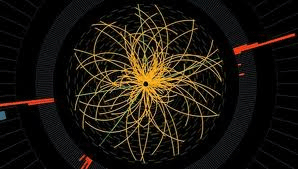It has taken nearly 50 years and cost £2.6bn. Now, at last, the Higgs boson particle has been found – and a new chapter in our understanding of the universe can begin.
It was a breakthrough that took almost half a century of deep thought, more than 30 years of painstaking experimentation and a massive £2.6bn machine. Yesterday, scientists said they believed they had found the subatomic particle that confirms our understanding of how the universe works.
 Discovering the so-called “Higgs boson” particle would be one of the greatest achievements in science, rivalling the discovery of the structure of DNA in 1953 and the Apollo Moon landings of the 1960s and 1970s. It can explain why some particles have mass, but why others, such as photons of light, do not.
Discovering the so-called “Higgs boson” particle would be one of the greatest achievements in science, rivalling the discovery of the structure of DNA in 1953 and the Apollo Moon landings of the 1960s and 1970s. It can explain why some particles have mass, but why others, such as photons of light, do not.
Although the discovery is consistent with such a particle – first postulated half a century ago by the retired British physicist Peter Higgs – scientists at the European Organisation for Nuclear Research (Cern) in Geneva stopped short of saying this was definitely what they had found.
Yet such is the degree of exactitude to which they work, they were still able to calculate that the new particle is very near to the “five-sigma” level of significance – meaning that there is less than a one in a million chance that their results are a statistical fluke.
